Among fields of pineapple and palm is a different kind of farm trying to bring back a lost art: the art of making chocolate. La Iguana Chocolate, set in the rural mountains outside Parrita, is one of a handful of bean-to-bar chocolate producers in Costa Rica. They’re one of the only chocolatiers in this area of the Pacific Coast, and after seeing this awesome video, we really wanted to pay them a visit. While recently staying in Jaco, we had a chance to take a day trip up to the village of Mastatal. Below we share our experience and some tips for visiting La Iguana Chocolate.

A Fallen Crop
Our tour began along the edge of the four hectare (10 acre) property where our host, Jorge, told us a little about the farm and the history of cacao. We learned that Jorge’s family had been farming the land surrounding us for over 30 years. In addition to cacao, they grew many other crops like avocados, squash, beans, bananas, oranges, and lemons. In recent years, the family had started focusing on making artisan chocolate, with Jorge playing a big role.
Pointing to a large yellow fruit protruding from the side of a tree, Jorge told us that this was a healthy cacao pod. With careful land management, their many cacao trees were hardy and productive, but it hadn’t always been that way. In the 1980s, a fungus had spread in Central and South America, wiping out almost the entire crop. Farmers in Costa Rica had planted cacao trees upon the encouragement of the Costa Rican government, and when the blight hit, they didn’t know what to do. Their trees were producing less and less cacao. Production fell by as much as 90%, which caused prices to plummet.
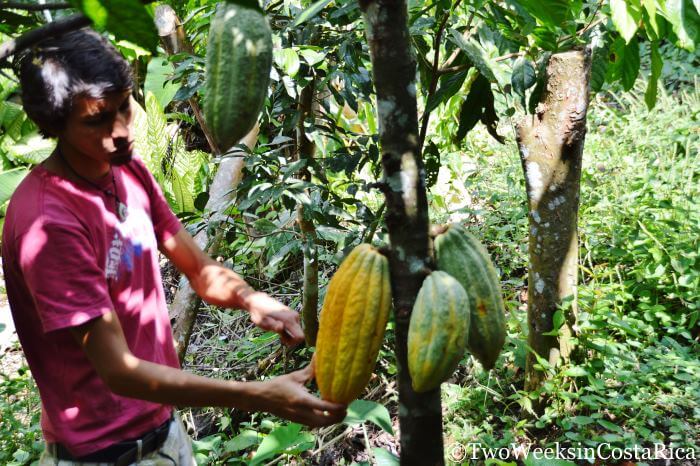
Jorge along with Vicky, another chocolatier at La Iguana, told us that the fungus was only part of the problem. The underlying issue was poor land and crop management. While the government had encouraged farmers to grow cacao, it didn’t provide the necessary support on how best to do it. Not knowing how to deal with the blight, the farmers cut down their cacao trees and moved on to more profitable types of farming or ranching.
Today few producers in Costa Rica create bean-to-bar chocolate. In stores, you’ll find the usual Hershey’s and maybe some Belgian chocolate, but typically nothing local. The Salazar Garcia family is working hard to change that. In addition to the four hectare plot, they have another 12 hectares (30 acres) of farmland with 3,500 cacao trees. Plans are also in the works to raise funds to buy more land for growing cacao.
The Chocolate-Making Process
After seeing how cacao grows and learning about its complicated history, we saw how chocolate is made as La Iguana would say, from tree to truffle.
The process starts with the raw cacao fruit. Each slimy white seed is plucked from inside the pod and dried and fermented. Fermentation lasts between 4-6 days. The way it works is fruit flies come to eat the sugar on the seeds, and in doing so, carry yeast from the environment. After the beans are fermented, they’re dried in the sun for a couple of days and turn to the familiar shade of brown. The dried beans are then roasted on low heat for 15-20 minutes to loosen the shell. At that point, you have to remove the shell so that when you grind the beans, the resulting chocolate is silky smooth.
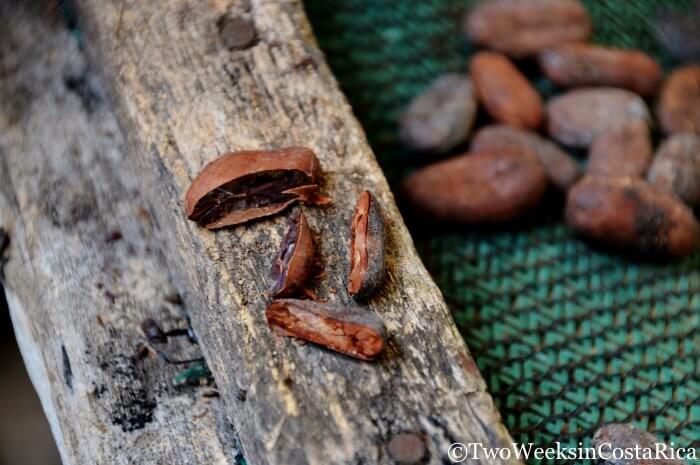
And that’s where the fun began. Vicky came over with an overflowing container of the brown beans and dropped them on a wide wooden table in front of us. We peeled off the tough outer skins of each small seed revealing the raw, warm chocolate. It smelled just like brownies. We then took turns moving the deep dark insides over an ancient grinder.
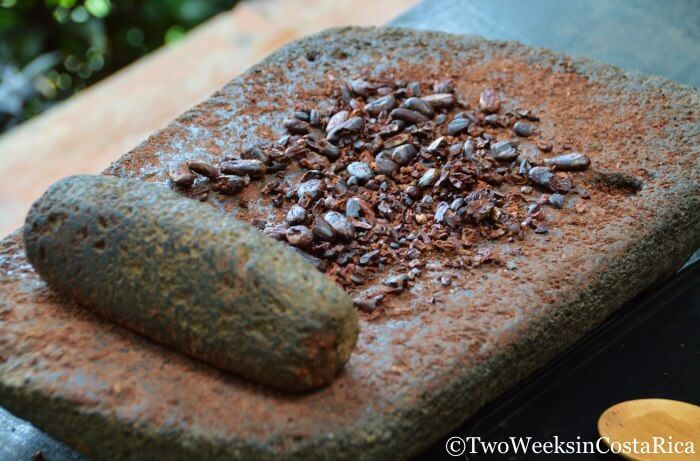
The next step was to run the coarse grinds through a more modern grinder to make them finer. Once ground, they are placed in a large electric bowl with rollers that spin and constantly press the chocolate. This process takes the longest (sometimes days) as it combines the chocolate molecules together and distributes the natural cacao butter evenly. Jorge and Vicky told us they add an extra 10% of cacao butter to the raw cacao to make it even more creamy and buttery. They told us that the difference between their chocolate and more commercial confectioners is that the big companies use fillers instead of pure cacao butter to keep costs down. A little cane sugar is also added to the mixture along with any flavorings like vanilla, cayenne pepper, or cinnamon.
Next we got to try our hand at tempering the chocolate, smoothing it along a marble surface to get it to the right temperature. Mastering the technique was harder than it looked but we started to get it after a while.
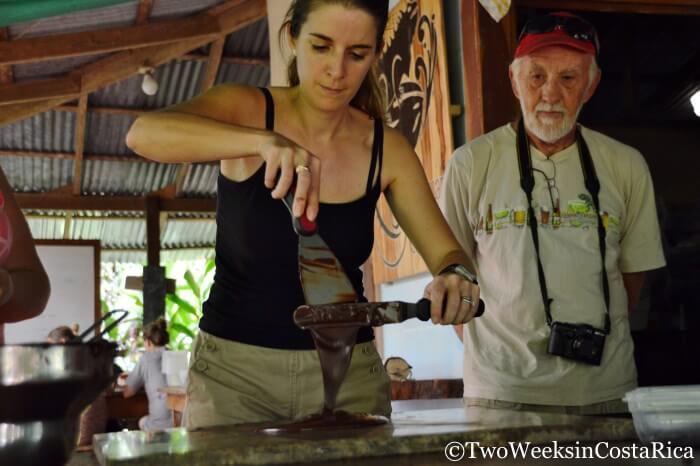
Finally, we formed the liquidy chocolate into individual truffles and a bar. A few minutes in the refrigerator later, and we had decadent, melt-in-your-mouth organic chocolate. It was delicious!
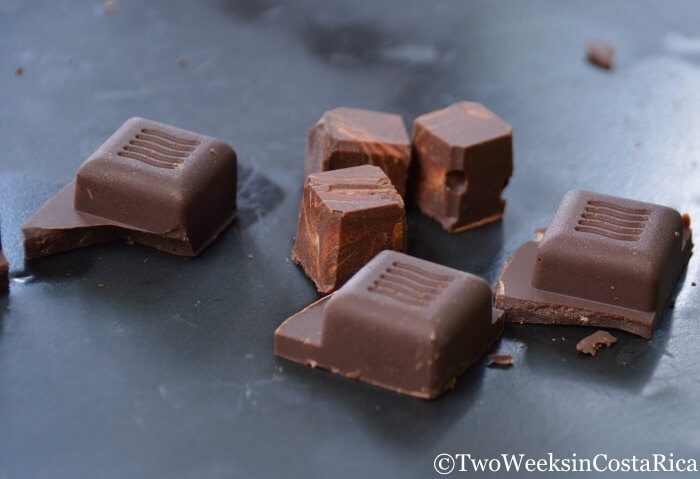
If you’re looking to get off-the-beaten path on your trip to Jaco or Manuel Antonio/Quepos, consider a visit to La Iguana Chocolate. This was one of the most authentic tours we’ve ever taken in Costa Rica. Learning about how chocolate is made from a family who does it every day was truly special and gave us a new appreciation for one of our favorite indulgences.
La Iguana Chocolate Tour Information
Cost
$20, for 2-2.5 hour tour
Arranging a Tour
Contact La Iguana Chocolate at laiguanachocolate(at)gmail(dot)com or by using the phone number on their website.
Volunteering
La Iguana Chocolate also has a volunteer program, and there were a number of volunteers on our visit. Check out their website for more information.
Directions to La Iguana Chocolate
La Iguana Chocolate is located in a remote area of Costa Rica in the village of Mastatal. It is not well signed so be sure to print out these directions if you don’t have GPS.
Take the Costanera highway (Route 34) towards Parrita to Route 239 towards Puriscal (there is a sign for Route 239/Puriscal). Go about 33 km (20.5 miles), following signs for San Jose; you’ll pass through several small towns, climbing into the mountains. After about 1 hour 15 minutes, take a right onto 318. This road is not well marked- look for a small sign for Mastatal. Go 6.8 km (4.3 miles) more to the town of Mastatal. La Iguana Chocolate is about 1 km past the main area of town on the left.
Conditions and Travel Time: Once you get off the coastal highway, the road turns to bumpy dirt for the rest of the way. Allow around 1.5-2 hours from the turnoff for Route 239. Four-wheel drive with higher clearance is recommended for the dry season and required for the rainy season.
Approximate Drive Time from Jaco: 2-2.5 hours
Approximate Drive Time from Manuel Antonio/Quepos: 2-2.5 hours
[box type=”bio”] If you plan to drive and need to rent a car, check out this special discount for our readers to save 10-25%.[/box]
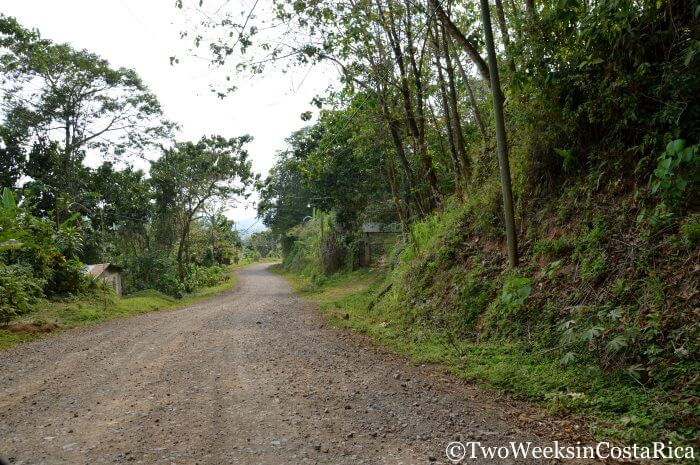
Have you ever done a chocolate tour? What did you think?
